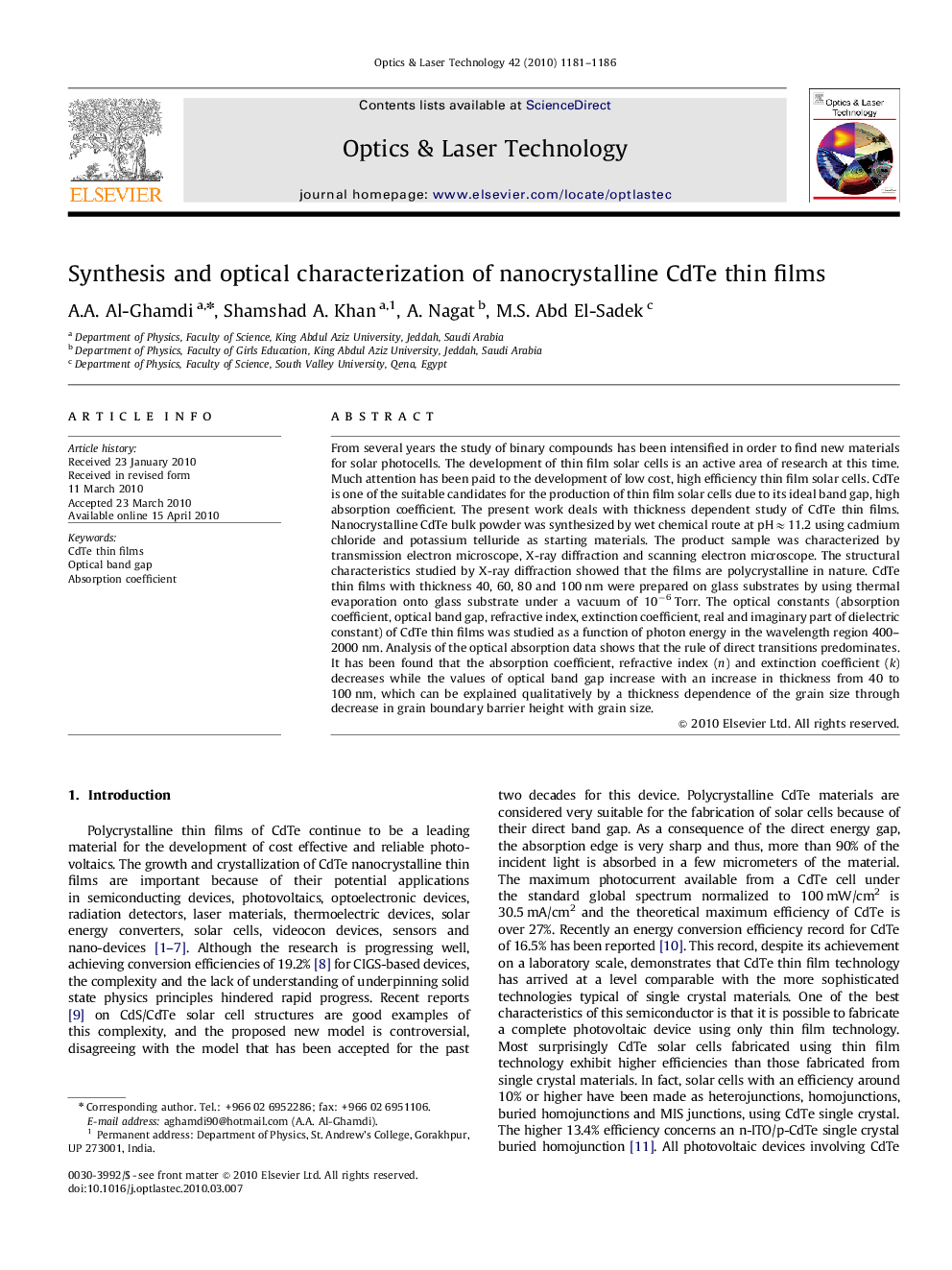| Article ID | Journal | Published Year | Pages | File Type |
|---|---|---|---|---|
| 733559 | Optics & Laser Technology | 2010 | 6 Pages |
From several years the study of binary compounds has been intensified in order to find new materials for solar photocells. The development of thin film solar cells is an active area of research at this time. Much attention has been paid to the development of low cost, high efficiency thin film solar cells. CdTe is one of the suitable candidates for the production of thin film solar cells due to its ideal band gap, high absorption coefficient. The present work deals with thickness dependent study of CdTe thin films. Nanocrystalline CdTe bulk powder was synthesized by wet chemical route at pH≈11.2 using cadmium chloride and potassium telluride as starting materials. The product sample was characterized by transmission electron microscope, X-ray diffraction and scanning electron microscope. The structural characteristics studied by X-ray diffraction showed that the films are polycrystalline in nature. CdTe thin films with thickness 40, 60, 80 and 100 nm were prepared on glass substrates by using thermal evaporation onto glass substrate under a vacuum of 10−6 Torr. The optical constants (absorption coefficient, optical band gap, refractive index, extinction coefficient, real and imaginary part of dielectric constant) of CdTe thin films was studied as a function of photon energy in the wavelength region 400–2000 nm. Analysis of the optical absorption data shows that the rule of direct transitions predominates. It has been found that the absorption coefficient, refractive index (n) and extinction coefficient (k) decreases while the values of optical band gap increase with an increase in thickness from 40 to 100 nm, which can be explained qualitatively by a thickness dependence of the grain size through decrease in grain boundary barrier height with grain size.
